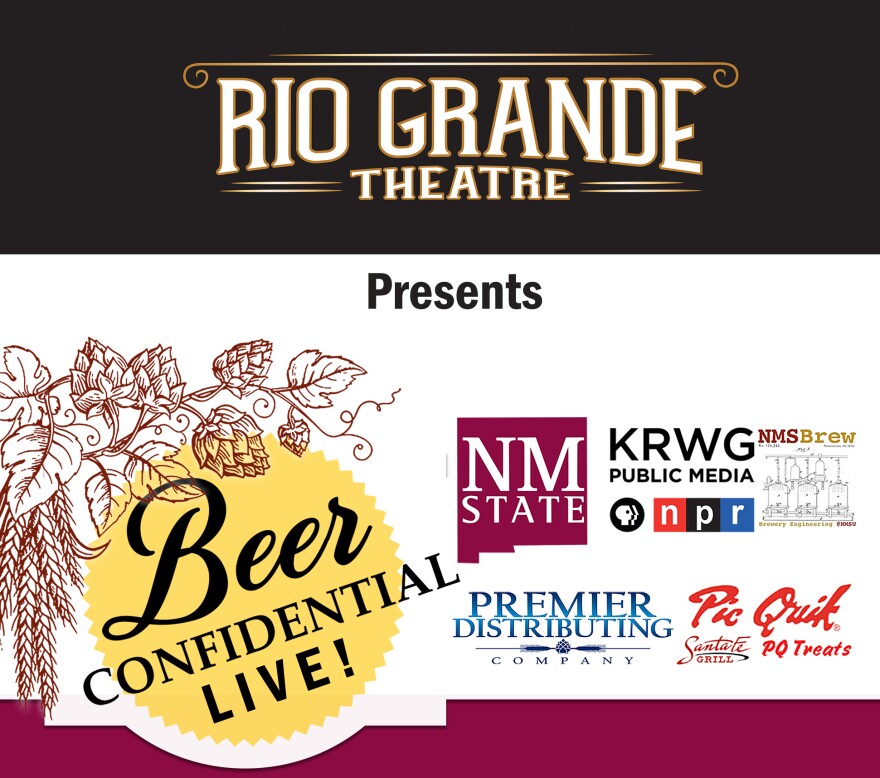To the initiate, craft beer is intimidating: so many styles, so many breweries, so much vocabulary, and so much lore. The desire to learn and to participate in the beer community is countered by the fear of being constantly overwhelmed and outclassed. If you find yourself in this category of initiate—welcome to the club of beer learners—there are lots of us. The key is not to become an expert before you start, the key is to start.
First, get a note-taking device of some kind and meet some beers. This can be done in several ways. You can visit a local brewery and ask for a “flight” (set of small servings, often 4-5 samples of 3-5 oz. each) of beers you have not tried before. A server will generally bring you the beers on some cleverly designed platform, ideally arranged in order of subtlest to strongest flavors. Try each beer in order, one at a time. Write down information about that beer so that you can look up information later and find that beer again (if desired). Write down what you notice: appearance, smell, taste, what it feels like in your mouth, what smells/tastes it reminds you of, etc. At first, your notes will be simplistic and general; that is okay – you will learn to notice more and to differentiate as you try more. Another good option for meeting new beers is the “build-your-own” multi-packs at liquor/grocery stores, especially if a friend or two can try beers with you. That way, you can try the largest variety without (necessarily) having to consume all the beer yourself.
With notes in hand, do some research about beer styles. Many brewery menus and beer packaging will include beer style information … and there are a lot of styles. Websites like Beer Advocate (see Resources list) provide information about the style of packaged beers, and lists of other beers made in that style. So, for example, if you discover that you like brown ales, Beer Advocate can provide ideas of other brown ales to try and where to get them. Beer styles are officially defined by the Beer Judge Certification Program (BJCP) Guidelines. This does not mean that all beers must be one of these styles or that all beers labeled as that style fit those guidelines; rather, the guidelines provide a common set of expectations for communication and for competitions. Styles are generally linked with beer history in a particular place (such as Belgium, England, Germany, etc.) since location strongly affected availability of brewing ingredients and technologies, and consumer preferences.
Learning to recognize names and characteristics of beer styles is a process. A few people (usually people who judge beers) have memorized this information. While such data recall can be an admirable goal (for those so inclined), novices will likely have more success if they focus on identifying two or three styles they like most so that when they enter a new taproom, they have a place to start. More experimentation, with intentional attention to style names/characteristics, will eventually lead to a mental profile for a range of beers. Talk with other people about the styles that they like; each person’s experience of a beer is slightly different and the comparison process can be fascinating.
Some beer styles are much easier to appreciate immediately than others. For example, jumping into a West Coast IPA or a kettle sour might be a bit much at the beginning. If you find yourself unpleasantly overwhelmed by a style, note your initial impressions, try some other, more approachable styles for a while (blonde ale, Oktoberfest, or kölsch, for example), and come back to (small samples of) that intense style later. Your own preferences may surprise you. Also, expect that preferences will change with season and with different foods. A high-ABV (alcohol by volume) Imperial Stout may be perfect with a dessert or rich cheese in the winter, while a light, hoppy American Pale Ale is more appealing with a basket of fish and chips in the spring.
Regardless of which beer styles you end up liking or where you are on your beer learning journey, grab a glass/bottle/can and join the conversation.
About the Authors
Catherine “Catie” Brewer received a B.S. in Chemistry from Indiana U. of Pennsylvania and a Ph.D. in Chemical Engineering and Biorenewable Resources & Technology from Iowa State University. She joined the Chemical & Materials Engineering faculty at New Mexico State University in 2013 and NMSBrew in 2016. Her interests include local beer ingredients, brewery engineering, waste biomass utilization, biochar, pyrolysis, renewable fuels, and sustainable agriculture. Outside of work, Catie enjoys cooking and homebrewing with her husband, under the close supervision of their dog and two little brewers-in-training.
Stephen Taylor received a B.A. in Chemistry and History from Rice University and a Ph.D. in Chemistry from Clemson University. He has been teaching CHME 395V Brewing and Society on beer styles, history, and homebrewing in the Department of Chemical & Materials Engineering at NMSU since 2012. Currently, he serves as NMSBrew’s brewery manager, and co-teaches CHME 495 Brewing Science and Engineering/FSTE 430 Designing and Brewing Great Beers of the World, and CHME 491 (the brewing study abroad courses). He recently completed his Certified Beer Server exam on his way to becoming a Certified Cicerone®.


